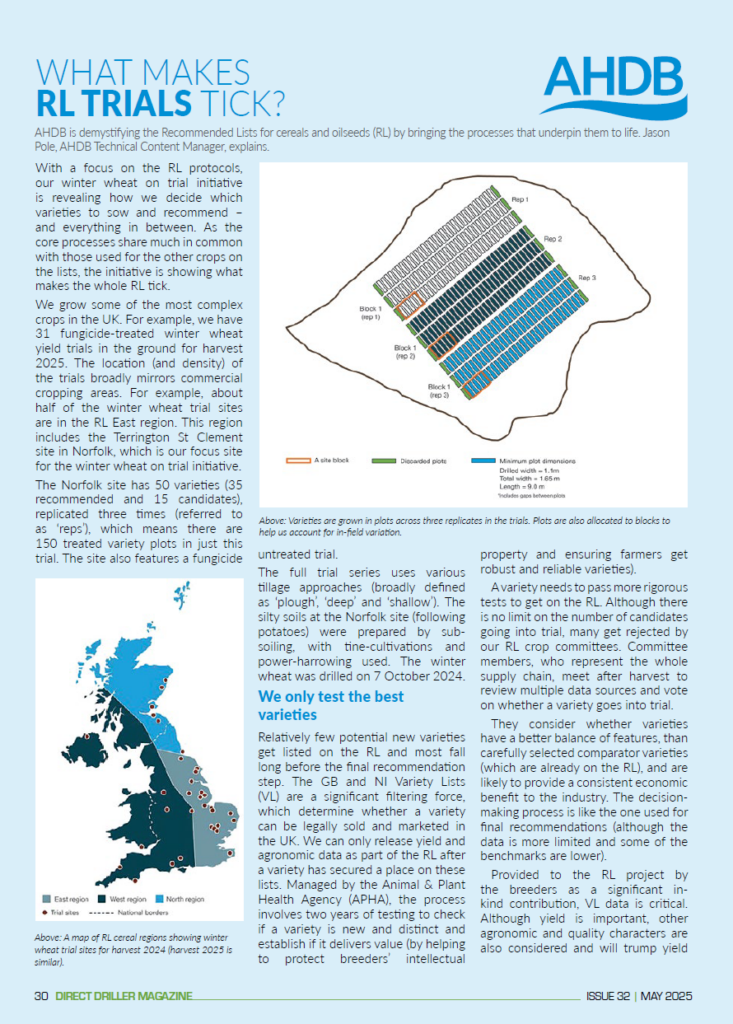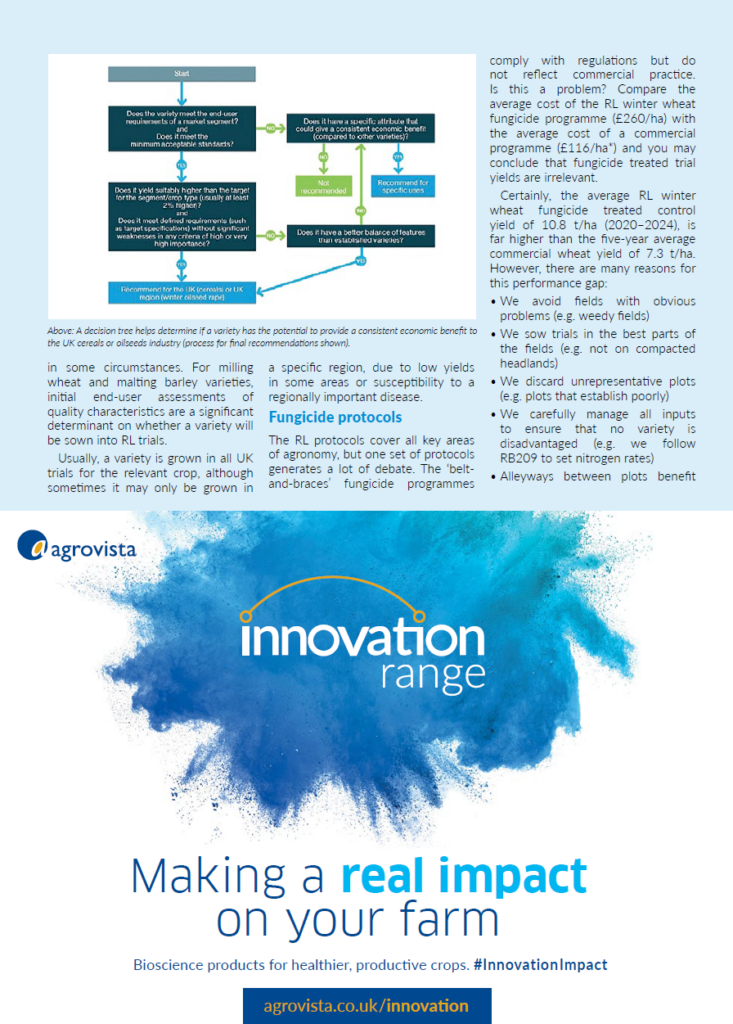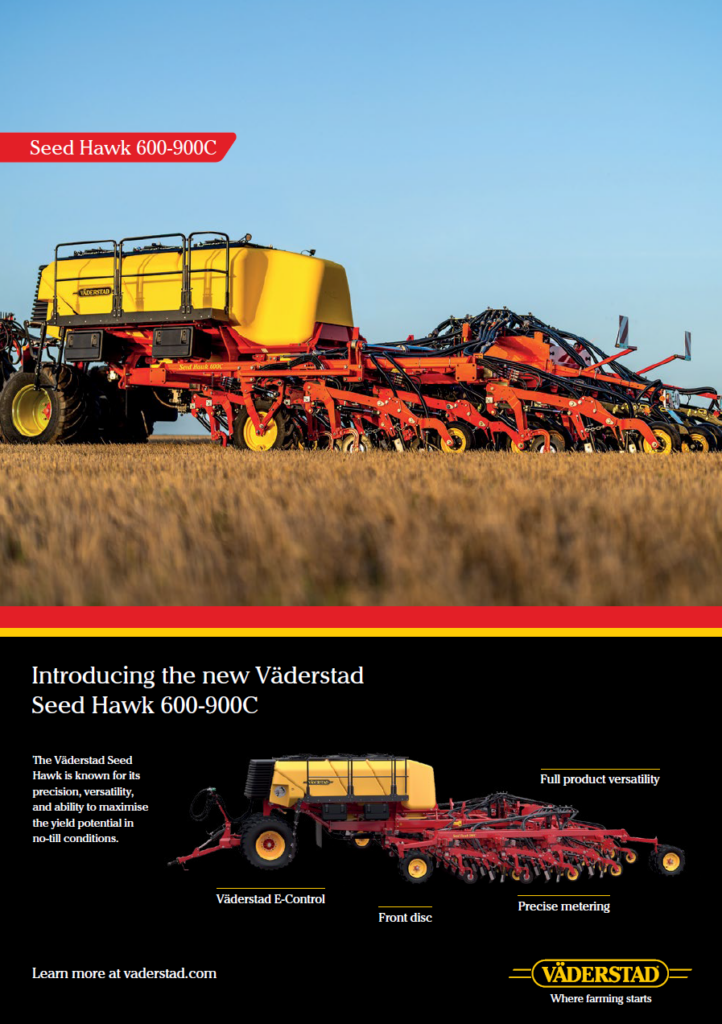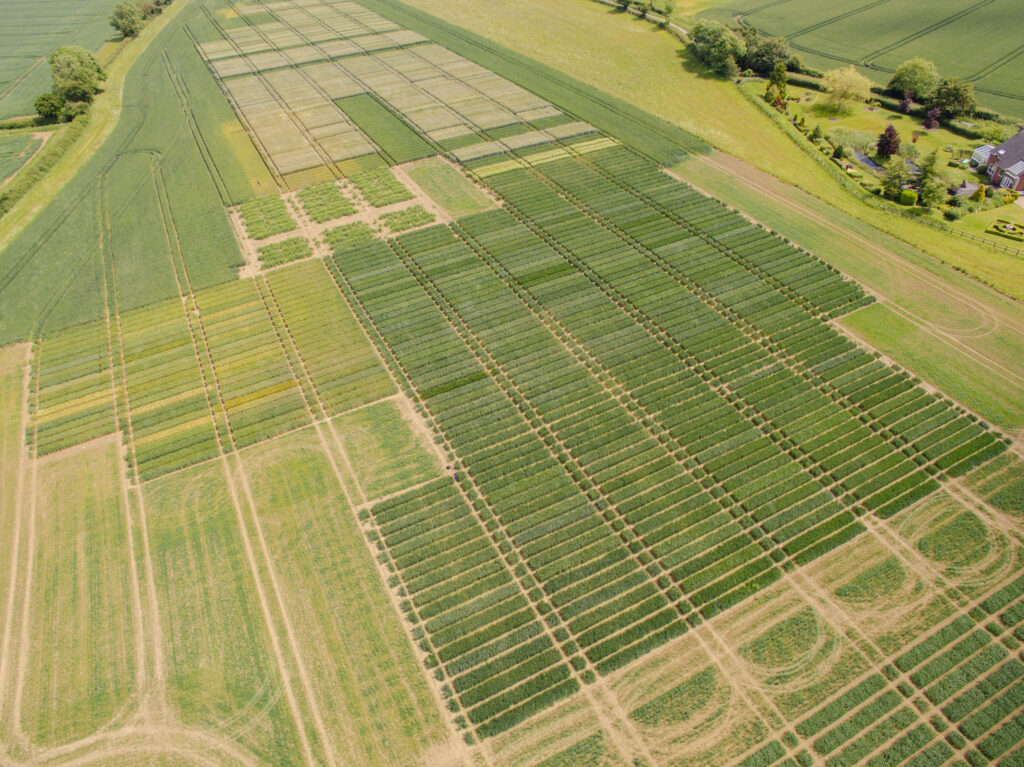AHDB is demystifying the Recommended Lists for cereals and oilseeds (RL) by bringing the processes that underpin them to life. Jason Pole, AHDB Technical Content Manager, explains.
With a focus on the RL protocols, our winter wheat on trial initiative is revealing how we decide which varieties to sow and recommend – and everything in between. As the core processes share much in common with those used for the other crops on the lists, the initiative is showing what makes the whole RL tick.
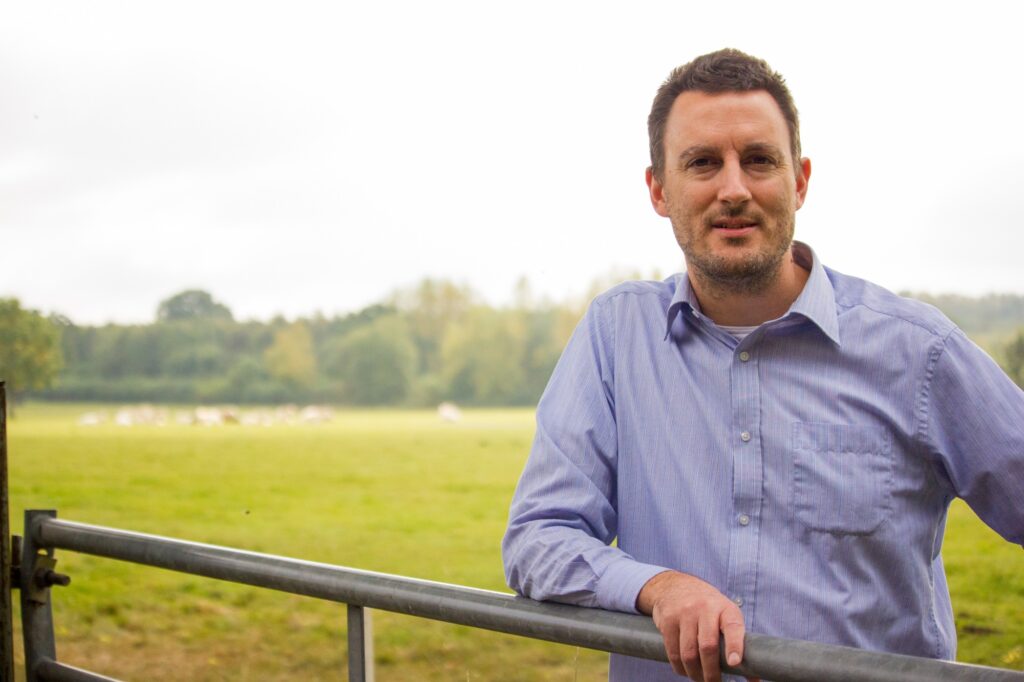
We grow some of the most complex crops in the UK. For example, we have 31 fungicide-treated winter wheat yield trials in the ground for harvest 2025. The location (and density) of the trials broadly mirrors commercial cropping areas. For example, about half of the winter wheat trial sites are in the RL East region. This region includes the Terrington St Clement site in Norfolk, which is our focus site for the winter wheat on trial initiative.
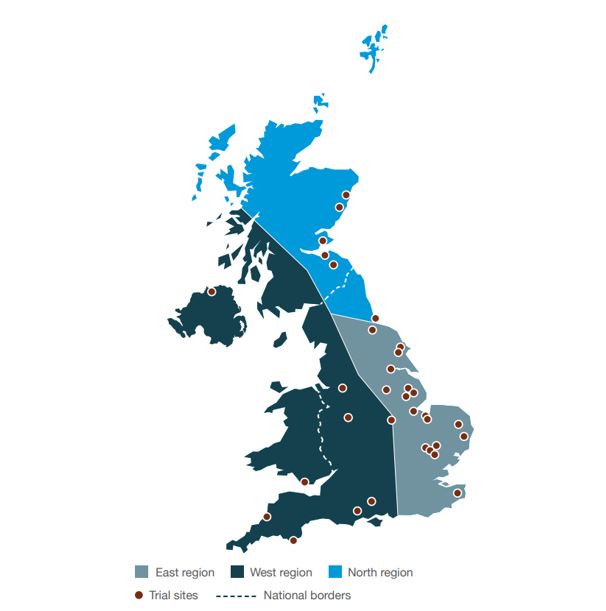
Above: A map of RL cereal regions showing winter wheat trial sites for harvest 2024 (harvest 2025 is similar).
The Norfolk site has 50 varieties (35 recommended and 15 candidates), replicated three times (referred to as ‘reps’), which means there are 150 treated variety plots in just this trial. The site also features a fungicide untreated trial.
The full trial series uses various tillage approaches (broadly defined as ‘plough’, ‘deep’ and ‘shallow’). The silty soils at the Norfolk site (following potatoes) were prepared by sub-soiling, with tine-cultivations and power-harrowing used. The winter wheat was drilled on 7 October 2024.
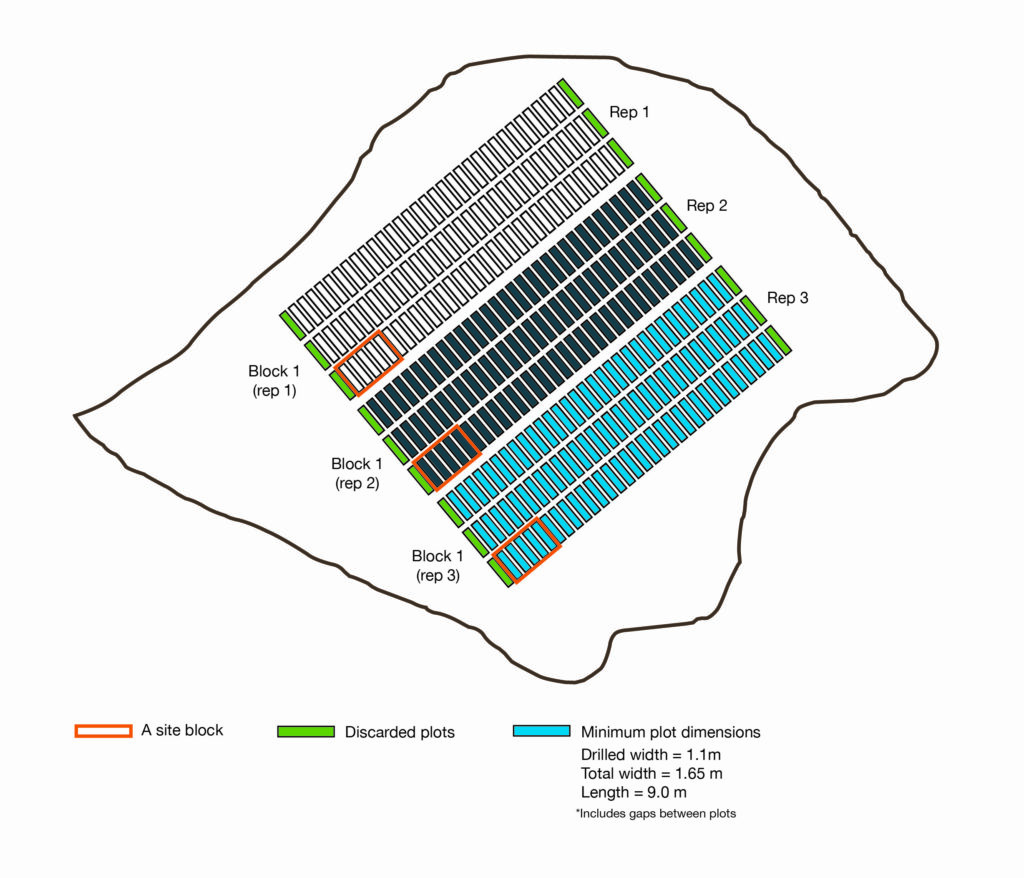
Above: Varieties are grown in plots across three replicates in the trials. Plots are also allocated to blocks to help us account for in-field variation.
We only test the best varieties
Relatively few potential new varieties get listed on the RL and most fall long before the final recommendation step. The GB and NI Variety Lists (VL) are a significant filtering force, which determine whether a variety can be legally sold and marketed in the UK. We can only release yield and agronomic data as part of the RL after a variety has secured a place on these lists. Managed by the Animal & Plant Health Agency (APHA), the process involves two years of testing to check if a variety is new and distinct and establish if it delivers value (by helping to protect breeders’ intellectual property and ensuring farmers get robust and reliable varieties).
A variety needs to pass more rigorous tests to get on the RL. Although there is no limit on the number of candidates going into trial, many get rejected by our RL crop committees. Committee members, who represent the whole supply chain, meet after harvest to review multiple data sources and vote on whether a variety goes into trial.
They consider whether varieties have a better balance of features, than carefully selected comparator varieties (which are already on the RL), and are likely to provide a consistent economic benefit to the industry. The decision-making process is like the one used for final recommendations (although the data is more limited and some of the benchmarks are lower).
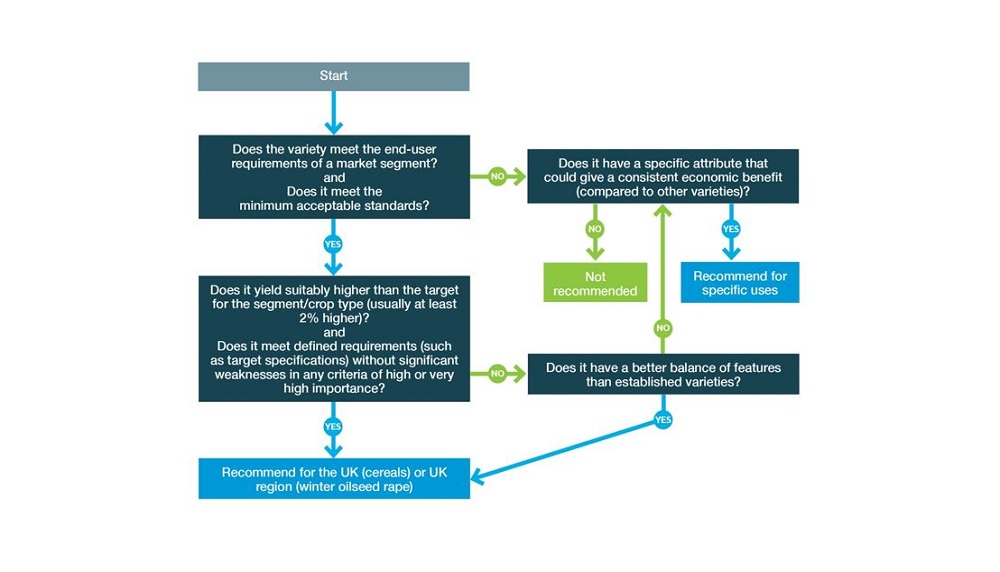
Above: A decision tree helps determine if a variety has the potential to provide a consistent economic benefit to the UK cereals or oilseeds industry (process for final recommendations shown).
Provided to the RL project by the breeders as a significant in-kind contribution, VL data is critical. Although yield is important, other agronomic and quality characters are also considered and will trump yield in some circumstances. For milling wheat and malting barley varieties, initial end-user assessments of quality characteristics are a significant determinant on whether a variety will be sown into RL trials.
Usually, a variety is grown in all UK trials for the relevant crop, although sometimes it may only be grown in a specific region, due to low yields in some areas or susceptibility to a regionally important disease.
Fungicide protocols
The RL protocols cover all key areas of agronomy, but one set of protocols generates a lot of debate. The ‘belt-and-braces’ fungicide programmes comply with regulations but do not reflect commercial practice. Is this a problem? Compare the average cost of the RL winter wheat fungicide programme (£260/ha) with the average cost of a commercial programme (£116/ha*) and you may conclude that fungicide treated trial yields are irrelevant.
Certainly, the average RL winter wheat fungicide treated control yield of 10.8 t/ha (2020–2024), is far higher than the five-year average commercial wheat yield of 7.3 t/ha. However, there are many reasons for this performance gap:
- We avoid fields with obvious problems (e.g. weedy fields)
- We sow trials in the best parts of the fields (e.g. not on compacted headlands)
- We discard unrepresentative plots (e.g. plots that establish poorly)
- We carefully manage all inputs to ensure that no variety is disadvantaged (e.g. we follow RB209 to set nitrogen rates)
- Alleyways between plots benefit yields (e.g. less resource competition)
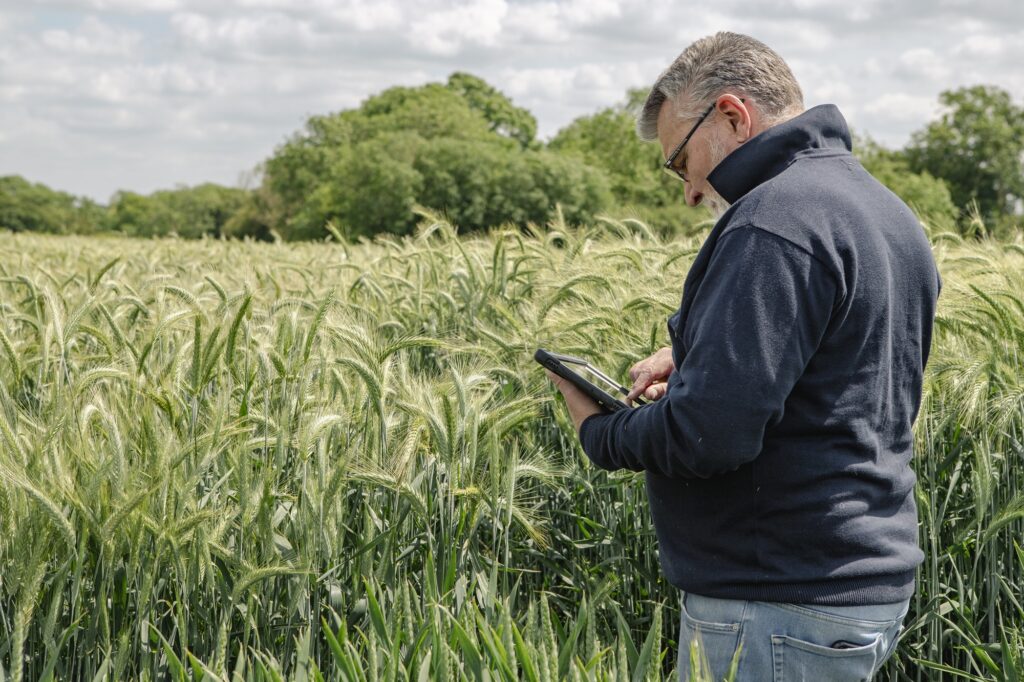
Margins matter
These days more farmers consider margins, as well as yields (according to recent RL reviews). From this viewpoint, the AHDB/ADAS wheat fungicide margin challenge (harvests 2019–2021) delivered fascinating results.
In the challenge, farmers designed fungicide programmes for a single variety in randomised plot trials, which also included fungicide ‘untreated’ and ‘blockbuster’ plots based on RL protocols. The highest margin programmes frequently yielded close to (even above) the blockbuster programme, demonstrating that the RL fungicide programme produces similar yields to good farm practice.
The programmes also produced a large spread in yields, even for a single fungicide cost point. This illustrates why it would be extremely difficult to pick a ‘farm standard’ programme for the RL trials (which deals with dozens of varieties, with different strengths and weaknesses, over dozens of sites).
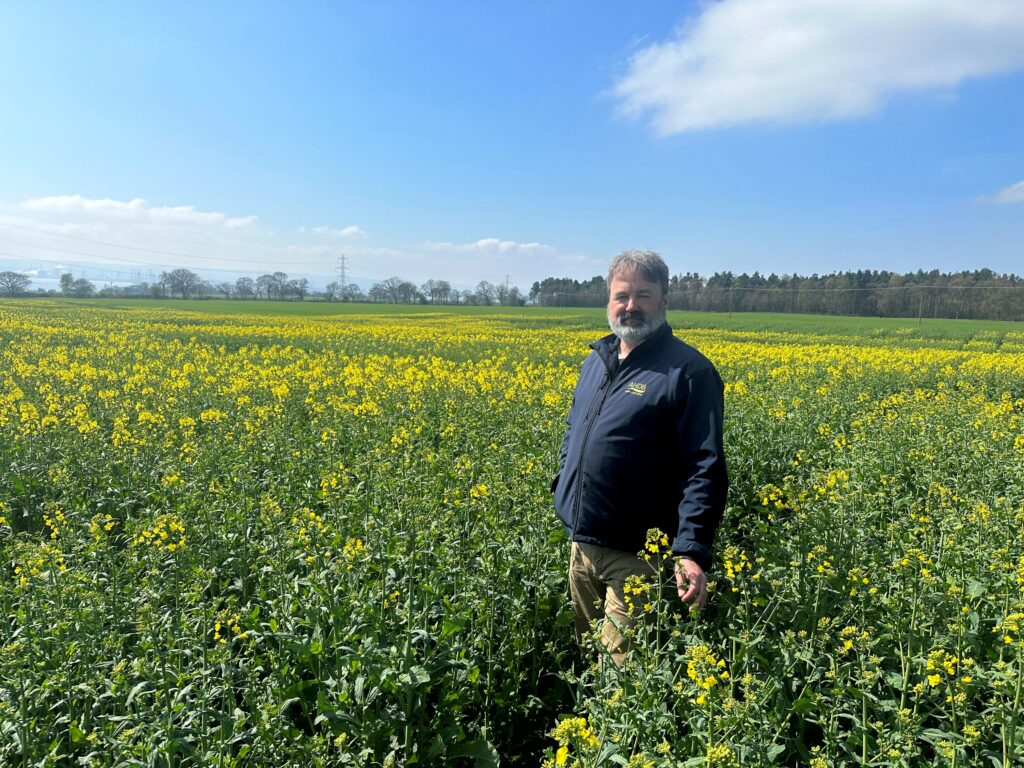
Why use such an intensive programme?
We aim to keep disease below 10% infection in all varieties and in all trials (from Cornwall to Aberdeenshire). This helps to reveal variety potential over a range of environmental conditions without variable disease pressures confounding the results.
Each December, BASIS-registered agronomists gather to refine the RL fungicide protocols. As the same core programme is applied across all trials and varieties, the fungicides work harder on some varieties and in some locations than others (to level the playing field). For example, rust fungicides used on varieties with a disease rating of 8 or 9 are unlikely to add to their yields, but they protect the weaker varieties. Similarly, robust doses are needed for sites with high disease pressure, which adds cost (with diminishing yield returns at most sites, compared with lower rates).
A recent review of RL fungicide programmes concluded that the current approach is best to provide robust data to help farmers select and manage varieties, when combined with fungicide untreated yields and disease resistance ratings.
Unlock the power of the RL
AHDB has committed almost £10m to the current five-year RL project phase (2021–26). However, the total project cost, which includes cash and in-kind contributions from breeders and processors, is closer to £25m.
For the latest information, visit the RL web pages, which feature information on:
- RL winter wheat on trial (ahdb.org.uk/rl-trials)
- RL protocols (ahdb.org.uk/rl-protocols)
- RL publications (ahdb.org.uk/rl)
- RL harvest 2025 results (ahdb.org.uk/harvest-results)
- RL variety open days (ahdb.org.uk/variety-open-days)
- RL app (ahdb.org.uk/rl-app)
- RL variety selection tool (ahdb.org.uk/vst)
- RL interactive (ahdb.org.uk/rl-interactive)
RL interactive is a new resource. Based on the latest RL data, the interactive tables feature filters to help you identify varieties that meet your needs (based on market, quality, yield, disease resistance and agronomic characteristics).
*Source: John Nix Farm Management Pocketbook 2024.
